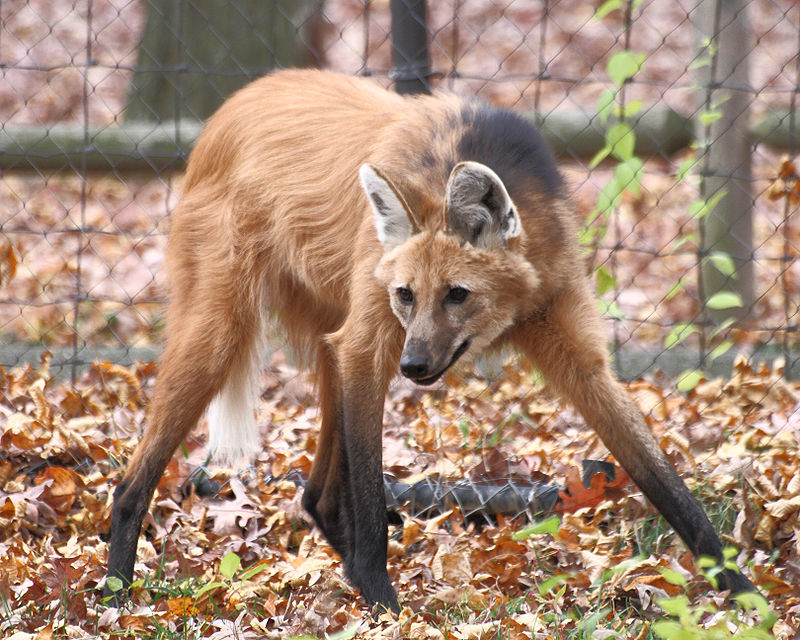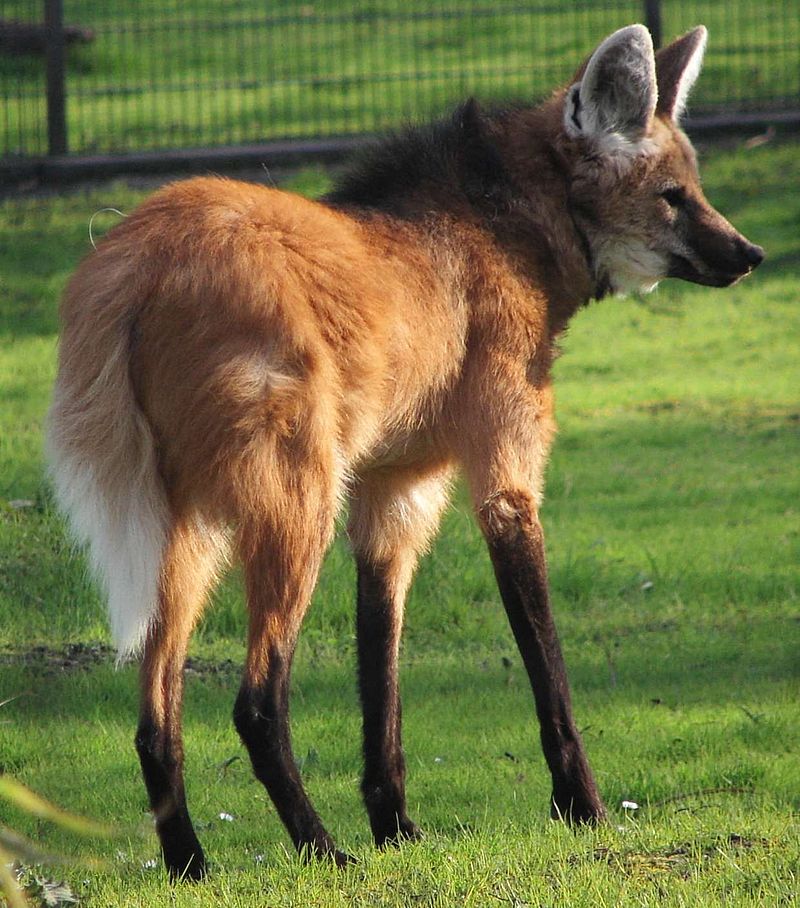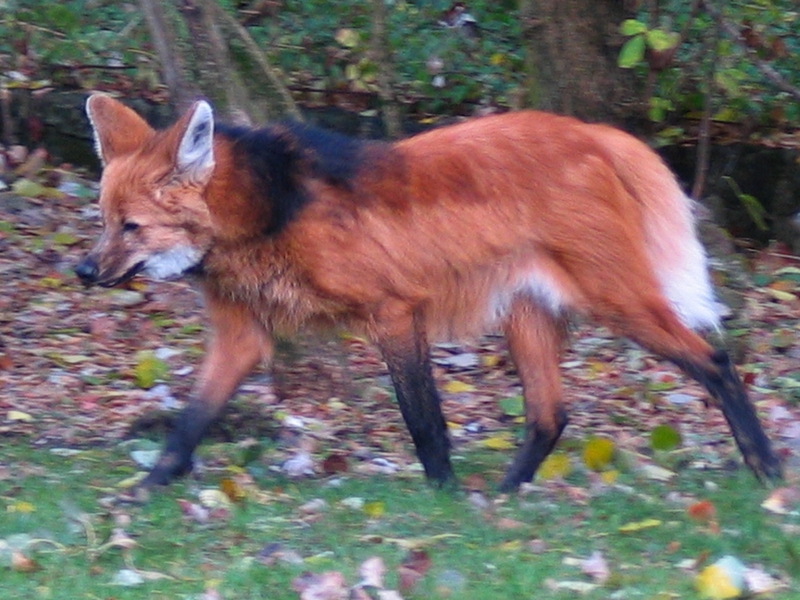Maned Wolf: A Fox On Stilts
Standing proud at almost 1 metre tall, the maned fox cuts an impressive figure. In this article, we explain why it has long legs, where it lives, what it eats… and what it smells like.
The maned wolf — Chrysocyon brachyurus — is a resident of the open grasslands of Brazil, Paraguay, Argentina, and Bolivia. It looks like a fox but, in fact, it is neither a fox nor a wolf.
Considered near threatened by the IUCN, the maned wolf is the largest canid in South America.
The maned wolf is a zoological oddity, and it’s not closely related to any other members of the canid family. Apparently, its personality is more fox-like than wolf-like but, before you get carried away, they’re not likely to make a good pet. First up, what’s with the impressive legs?
The Maned Wolf’s Long Legs
Its long legs are thought to have evolved as an adaptation to a life among tall grass; it stands around 90 centimeters tall, making it the tallest wild canid. The long legs also offer a slightly elevated view of delicious small mammals as they scurry through the grass.
The maned wolf’s ample leg bones make it surprisingly graceful as it strides across the vast expanses of the Brazilian Cerrado, where around 90% of them now live. The maned wolf can reach an impressive speed, as the video below shows. It looks more like a horse:
Maned Wolf’s Urine
Aside from their distinctive height, they’re also the proud owner of a rather pungent stench. The maned wolf’s urine, which is used to mark their territory and signpost buried kills, smells like cannabis; so much so that Dutch police were once called to Rotterdam Zoo after a member of the public mistook the aroma for marijuana smoke.
The similarity between the two odours is thought to be due to pyrazine, a chemical found in both cannabis and maned wolf pee.
Maned Wolf Diet
The canid splits its diet roughly 50/50 between vegetable matter and animals. They catch small mammals, beetles, birds, and occasionally fish; but they also tuck into fruits, sugar cane, cacti, and tubers. Maned wolves in captivity tend to get fed a larger proportion of meat in their diet; unfortunately, this can produce kidney stones.
Although it appears oddly designed, the maned wolf has performed rather well in the game of life. It is thought to be the only South American canid that survived the Pleistocene extinction; an extinction which claimed the lives of some great South American beasts, including the sabre toothed cat, the dire wolf, Arctotherium — the largest bear to have roamed planet Earth, and the giant vampire bat.
The maned wolf has no natural predators; its dwindling numbers are due, once again, to human-led destruction of their habitat. More than half of the Cerrado that it calls home has now been converted into pasturelands and the like. They also face danger from man’s best friend — both physical attacks and the diseases that they carry can cause damage.
These solitary, shy animals are a beauty to behold. Long may they reign supreme over the grasslands. However, there are only an estimated 13,000–15,000 mature maned wolves left in the wild. Come on humans. Sort it out.
MORE NATURE
NATURE’S MOST SURPRISED LOOKING BIRD: POTOO
THE MAJESTIC DOUC LANGUR




















